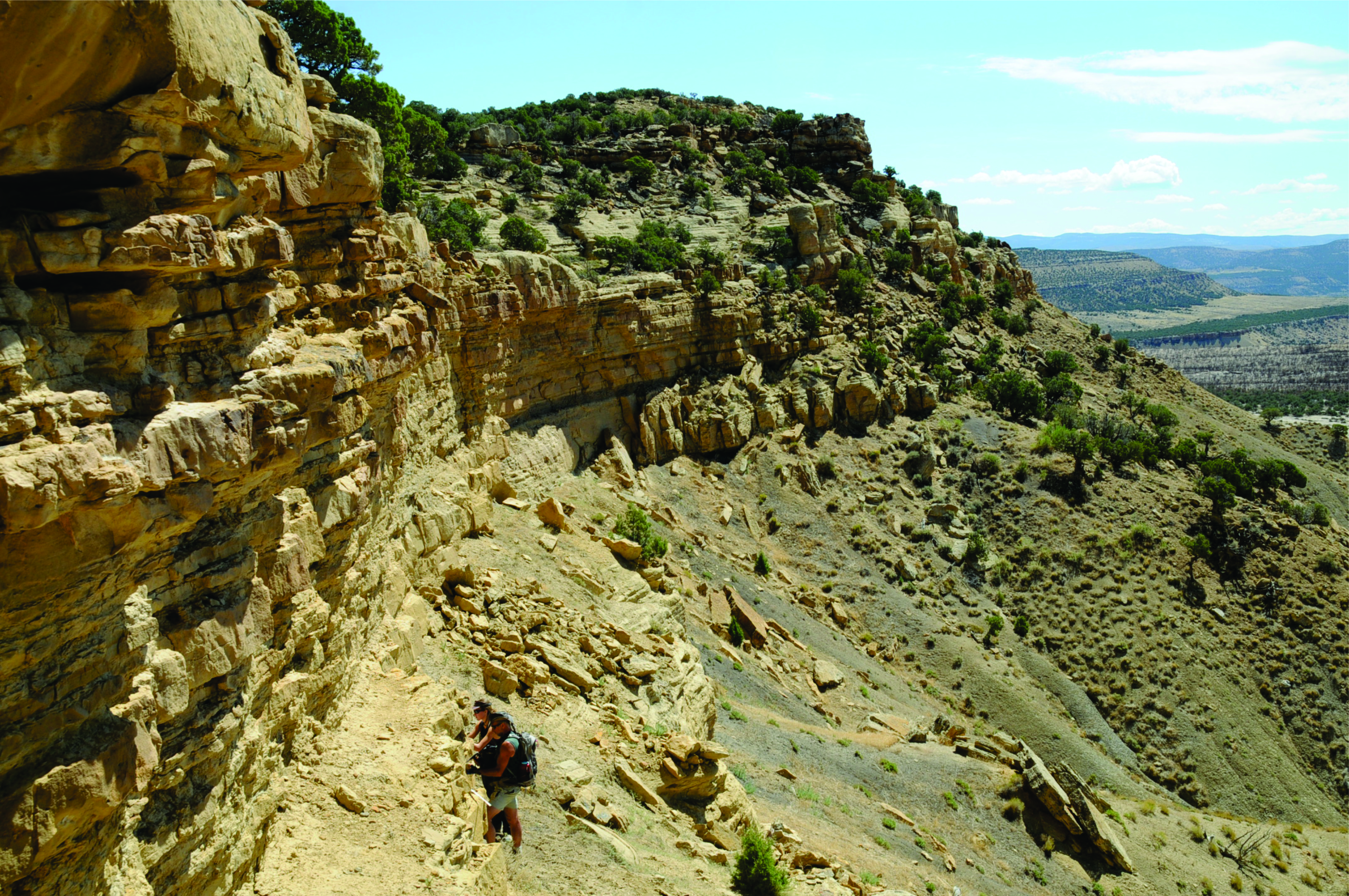October 26, 2020

Peter Flaig
Controls on Deltaic Deposits of the Loyd Formation

I recently published a manuscript examining the sediments and tracks-trails of marine organisms (trace fossils) in an extensive outcrop belt that preserves an ancient (Cretaceous) delta deposit—the Loyd Formation (Rangely, Colorado).
It is extremely challenging to establish from the rock record the time that it took different types of sediments to deposit along ancient delta fronts. Rocks that can be dated isotopically are rare, and the resolution of ages is poor. I use a combination of deposit characteristics and the quantity and diversity of tracks-trails of marine organisms to explore how evidence for relative time spent under active sedimentation during river-floods versus relative sedimentation quiescence might be preserved in this ancient delta deposit that was also affected by tides. In this study, we consider evidence for the underlying controls on the deposition, distribution, and stacking of these fluctuating deposits. We then compare them to other ancient deltas that experienced different controls on sedimentation.
Researchers addressing the question of how relative time may be recorded in their deltaic deposits with a variable trace fossil assemblage and the controls on sedimentation will benefit from insights in this paper. Researchers interested in reservoir characterization and scales of heterogeneity will also benefit from this study.